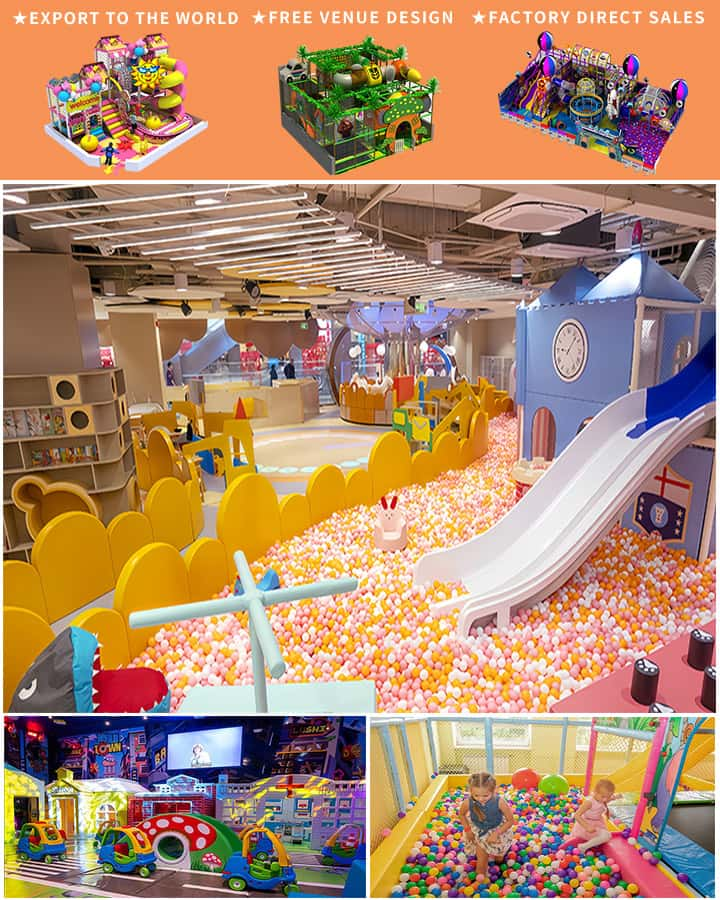Starting an indoor playground business can be both an exciting and challenging endeavor. With careful planning and strategic thinking, you can create a thriving hub of fun and learning for children while achieving your business goals. This article will guide you through the essential steps to craft a comprehensive business plan for an indoor playground.
Understanding Your Market
The first step in creating a successful business plan is conducting thorough market research. Understand the demand for indoor playgrounds in your area by analyzing demographic trends, local competition, and consumer behavior. Identify your target audience—are they families with young children, schools looking for field trip destinations, or birthday party planners? Gathering this information will help you tailor your services to meet specific needs and stand out from competitors.
Concept and Theme
Your indoor playground should have a unique concept or theme that captures the imagination of children and appeals to parents. Whether it’s based on a popular cartoon, a jungle adventure, or a space exploration theme, the idea is to create an engaging environment that encourages physical activity, creativity, and social interaction. Choose age-appropriate equipment and ensure safety standards are met to provide a secure environment for play.

Financial Planning
A robust financial plan is crucial for the success of your indoor playground. Outline your startup costs, which may include leasing or purchasing a facility, obtaining insurance, buying play equipment, and marketing expenses. Project your revenue streams, considering factors such as admission fees, membership packages, hosted events, and food sales. Create a break-even analysis to understand how many customers you need to cover expenses and plan for profitability. Don’t forget to account for ongoing costs like maintenance, staffing, and utilities.
Operational Strategy
Develop a solid operational plan that details how your indoor playground will run on a day-to-day basis. This includes staffing requirements, operating hours, and procedures for customer service and safety protocols. Consider implementing a booking system for parties and events to manage peak times effectively. Establish partnerships with local schools, daycare centers, and community organizations to attract group visits. Additionally, invest in a reliable point-of-sale system to streamline transactions and manage memberships or loyalty programs.
Marketing and Promotion
Marketing is key to attracting customers and building brand awareness. Create a strong online presence with a user-friendly website and active social media profiles showcasing your playground’s features, events, and testimonials. Use targeted advertising, such as Google Ads and Facebook campaigns, to reach potential customers in your area. Offer promotions and discounts to first-time visitors and consider hosting open houses or special events to generate buzz. Collaborate with influencers or bloggers who focus on family activities to expand your reach.
Legal and Compliance
Ensure your indoor playground complies with all relevant laws and regulations. Obtain necessary permits and licenses required for operating a business in your location, including health and safety inspections. Consult with legal experts to draft contracts, waivers, and policies that protect your business and customers. Keep up-to-date with industry standards and regulations to maintain a safe and compliant operation.
Monitoring and Evaluation
Regularly monitor your business’s performance using key performance indicators (KPIs) such as occupancy rates, customer satisfaction scores, and average spending per visit. Collect feedback from customers through surveys or suggestion boxes to identify areas for improvement. Stay adaptable and be prepared to make changes based on market trends, customer preferences, and operational challenges. Continuous evaluation will help you refine your strategies and ensure long-term success.
In conclusion, crafting a detailed business plan is vital for launching and growing a successful indoor playground. By understanding your market, developing a unique concept, planning your finances meticulously, and focusing on operational excellence, you can create a vibrant and profitable venue that delights children and parents alike. With diligent execution and continuous improvement, your indoor playground has the potential to become a beloved community resource.




